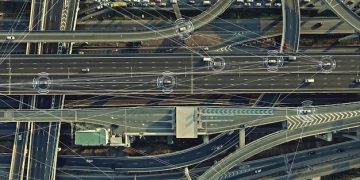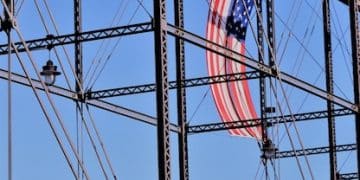Examining the Impact: Infrastructure Bill on US Transportation Networks
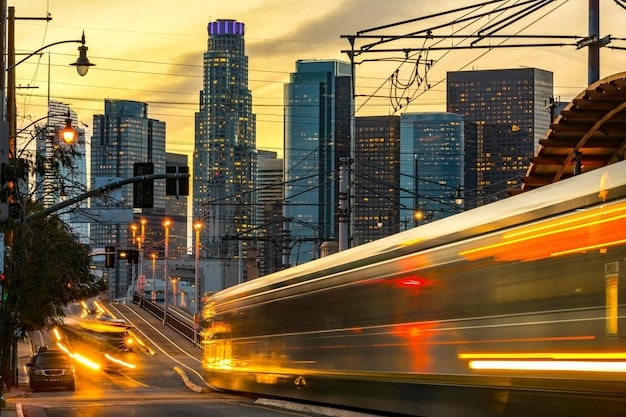
The Infrastructure Investment and Jobs Act, often referred to as the Infrastructure Bill, is poised to significantly reshape transportation networks across the United States through substantial investments in roads, bridges, public transit, and other critical infrastructure.
The Infrastructure Bill, officially known as the Infrastructure Investment and Jobs Act, represents a monumental commitment to revitalizing and modernizing America’s aging infrastructure. This transformative legislation is expected to have a profound impact on transportation networks across the US.
Understanding the Infrastructure Investment and Jobs Act
The Infrastructure Investment and Jobs Act is a landmark piece of legislation that aims to address critical infrastructure needs across the United States. It allocates significant funding to various sectors, including transportation, energy, water, and broadband.
This bill is designed not only to repair and rebuild existing infrastructure but also to invest in new technologies and approaches to improve efficiency, sustainability, and resilience. The transportation sector is a major focus of the bill, reflecting the urgent need to modernize America’s roads, bridges, and public transit systems.
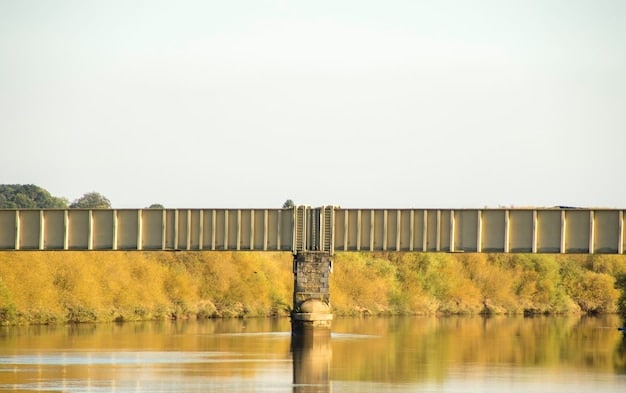
Key Provisions for Transportation
The Infrastructure Bill includes several key provisions that directly impact transportation networks. These provisions cover a wide range of areas, from highway maintenance and bridge repair to the expansion of public transit and the development of electric vehicle infrastructure.
One of the most significant aspects of the bill is its focus on addressing the backlog of deferred maintenance on existing infrastructure. Many roads and bridges across the US are in dire need of repair, and the bill allocates substantial funding to address these critical needs.
- Repair and reconstruction of roads and bridges
- Expansion and modernization of public transit systems
- Development of electric vehicle charging infrastructure
- Investment in passenger and freight rail improvements
The Infrastructure Investment and Jobs Act is a comprehensive effort to modernize transportation networks, improving safety, efficiency, and accessibility for all Americans. By addressing long-standing infrastructure challenges, the bill aims to lay the foundation for future economic growth and prosperity.
Impact on Roads and Bridges
Roads and bridges form the backbone of the nation’s transportation network, facilitating the movement of goods and people across the country. The Infrastructure Bill allocates a significant portion of its funding to address the urgent need for repairs and upgrades.
Many roads and bridges in the United States are in poor condition, leading to safety concerns, traffic congestion, and increased transportation costs. The bill aims to reverse this trend by investing in projects that will improve the overall quality and safety of these critical assets.
Repairing Existing Infrastructure
One of the primary goals of the Infrastructure Bill is to address the backlog of deferred maintenance on existing roads and bridges. This includes repairing potholes, resurfacing roads, and replacing or rehabilitating bridges that are structurally deficient.
The bill also provides funding for projects that will improve the resilience of roads and bridges to withstand extreme weather events, such as floods and hurricanes. This is particularly important in regions that are vulnerable to climate change impacts.
Modernizing Road Design
In addition to repairing existing infrastructure, the Infrastructure Bill also invests in modernizing road design to improve safety and efficiency. This includes adding new lanes, improving intersections, and implementing intelligent transportation systems.
The bill also supports the deployment of connected and autonomous vehicle technologies, which have the potential to revolutionize transportation by reducing accidents and improving traffic flow. These technologies require significant investment in infrastructure, such as sensors and communication networks.
- Reduced traffic congestion and travel times
- Improved safety for drivers and passengers
- Enhanced economic productivity and competitiveness
- Increased resilience to extreme weather events
The Infrastructure Bill is expected to have a transformative impact on roads and bridges across the United States. By investing in repairs, upgrades, and modernization, the bill will ensure that these critical assets continue to serve the nation’s transportation needs for years to come.
Enhancing Public Transportation
Public transportation plays a vital role in connecting communities, reducing traffic congestion, and promoting sustainable transportation. The Infrastructure Bill recognizes the importance of public transit and allocates significant funding to enhance and expand these systems.
Many public transit systems in the United States are facing significant challenges, including aging infrastructure, declining ridership, and funding shortages. The bill aims to address these challenges by investing in projects that will improve the quality, reliability, and accessibility of public transit.
Modernizing Existing Systems
One of the key priorities of the Infrastructure Bill is to modernize existing public transit systems. This includes replacing outdated equipment, upgrading infrastructure, and implementing new technologies to improve efficiency and reliability.
The bill also provides funding for projects that will improve the accessibility of public transit for people with disabilities and other vulnerable populations. This includes adding ramps, elevators, and other features that make it easier for everyone to use public transit.
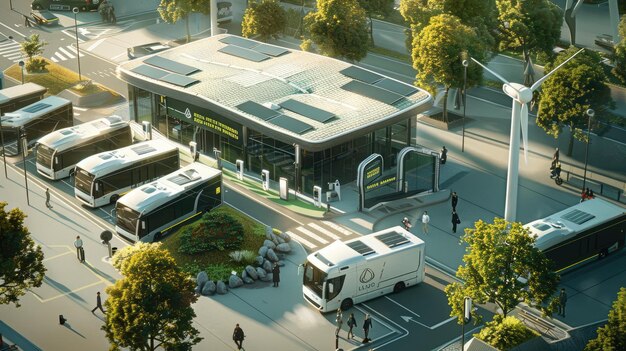
Expanding Transit Networks
In addition to modernizing existing systems, the Infrastructure Bill also invests in expanding public transit networks to reach more communities. This includes building new rail lines, bus routes, and other transit options.
The bill also supports the development of innovative transit solutions, such as bus rapid transit and microtransit, which can provide more flexible and cost-effective transportation options in underserved areas.
- Increased ridership and reduced traffic congestion
- Improved air quality and reduced greenhouse gas emissions
- Enhanced economic opportunity and access to jobs
- Increased mobility for people without cars
The Infrastructure Bill is poised to transform public transportation across the United States. By investing in modernization, expansion, and innovation, the bill will improve the quality of life for millions of Americans and create a more sustainable and equitable transportation system.
Investing in Passenger and Freight Rail
Passenger and freight rail are crucial components of the nation’s transportation system, providing efficient and sustainable ways to move people and goods. The Infrastructure Bill recognizes the importance of rail and allocates significant funding to improve and expand these networks.
Many passenger and freight rail lines in the United States are in need of modernization, with outdated infrastructure, congested tracks, and limited capacity. The bill aims to address these challenges by investing in projects that will improve safety, reliability, and speed.
Upgrading Rail Infrastructure
One of the key priorities of the Infrastructure Bill is to upgrade existing rail infrastructure. This includes replacing outdated tracks, signals, and bridges, as well as improving rail yards and terminals.
The bill also provides funding for projects that will improve the resilience of rail infrastructure to withstand extreme weather events, such as floods and hurricanes. This is particularly important in regions that are vulnerable to climate change impacts.
Expanding Rail Capacity
In addition to upgrading existing infrastructure, the Infrastructure Bill also invests in expanding rail capacity to accommodate growing passenger and freight volumes. This includes adding new tracks, building new rail lines, and improving rail connections.
The bill also supports the development of high-speed rail corridors, which can provide faster and more efficient transportation options between major cities. These projects have the potential to transform travel patterns and boost economic growth.
- Reduced travel times and increased efficiency
- Improved safety and reduced accidents
- Enhanced economic competitiveness and trade
- Reduced greenhouse gas emissions and air pollution
The Infrastructure Bill is expected to have a significant impact on passenger and freight rail in the United States. By investing in upgrades, expansion, and innovation, the bill will ensure that rail continues to play a vital role in the nation’s transportation system.
Supporting Electric Vehicle Infrastructure
Electric vehicles (EVs) are becoming increasingly popular as consumers seek cleaner and more sustainable transportation options. The Infrastructure Bill recognizes the importance of EVs and allocates significant funding to support the development of a nationwide charging network.
One of the biggest barriers to EV adoption is the lack of charging infrastructure, particularly in rural areas and underserved communities. The bill aims to address this challenge by investing in projects that will expand the availability of charging stations and make it easier for people to drive EVs.
Building a Charging Network
The Infrastructure Bill provides funding for the construction of a nationwide network of EV charging stations. This network will be strategically located along major highways and in urban areas to ensure that EV drivers have access to charging wherever they go.
The bill also supports the development of fast-charging technology, which can significantly reduce the amount of time it takes to charge an EV. This is particularly important for long-distance travel.
Promoting EV Adoption
In addition to building a charging network, the Infrastructure Bill also promotes EV adoption through various incentives and programs. This includes tax credits for EV purchases, as well as grants for cities and states to invest in EV infrastructure.
The bill also supports the development of workforce training programs to prepare workers for jobs in the EV industry. This is essential to ensure that the US has the skilled workforce needed to support the growing EV market.
- Reduced greenhouse gas emissions and air pollution
- Lower fuel costs for drivers
- Increased energy independence
- Job creation in the EV industry
The Infrastructure Bill is a major step forward in supporting the transition to electric vehicles. By investing in charging infrastructure and promoting EV adoption, the bill will help create a cleaner, more sustainable transportation system for the future.
Addressing Equity and Accessibility
The Infrastructure Bill recognizes that transportation investments should benefit all communities, including those that have been historically underserved. The bill includes provisions to address equity and accessibility in transportation planning and project development.
Many low-income communities and communities of color face significant transportation challenges, including limited access to jobs, healthcare, and other essential services. The bill aims to address these challenges by investing in projects that will improve transportation options and connectivity in underserved areas.
Prioritizing Underserved Communities
One of the key principles of the Infrastructure Bill is to prioritize transportation investments in underserved communities. This includes projects that will improve access to public transit, walking, and biking.
The bill also provides funding for projects that will address transportation-related environmental justice issues, such as air pollution and noise pollution. These projects can help improve the health and quality of life for residents in underserved communities.
Improving Accessibility
In addition to prioritizing underserved communities, the Infrastructure Bill also includes provisions to improve accessibility for people with disabilities. This includes projects that will make public transit, sidewalks, and other transportation facilities more accessible.
The bill also supports the development of accessible transportation technologies, such as autonomous vehicles, which have the potential to greatly improve mobility for people with disabilities.
- Improved access to jobs, healthcare, and other essential services
- Reduced transportation costs for low-income families
- Increased mobility and independence for people with disabilities
- A more equitable and inclusive transportation system
The Infrastructure Bill is a significant opportunity to address equity and accessibility in transportation. By prioritizing underserved communities and improving accessibility for people with disabilities, the bill can help create a more just and equitable transportation system for all Americans.
| Key Aspect | Brief Description |
|---|---|
| 🛣️ Road & Bridge Repair | Fixing roads and bridges is a priority to ease traffic and boost safety. |
| 🚆 Public Transit Upgrade | Modernizing buses and trains for better access and less pollution. |
| ⚡ EV Charging Network | Building charging stations to support electric vehicles nationwide. |
| 🛤️ Rail Modernization | Enhancing passenger and freight rail for quicker and safer transport. |
Frequently Asked Questions
▼
The Infrastructure Investment and Jobs Act, often called the Infrastructure Bill, is a US law to improve infrastructure like roads, bridges, and public transit.
▼
The bill allocates funds for repairing and modernizing roads and bridges, reducing congestion and enhancing safety for all users.
▼
Improvements involve upgrading existing systems, expanding routes and making transit more accessible and reliable for all commuters.
▼
The bill funds a national network of EV charging stations, encourages EV adoption through incentives and stimulates workforce development in the EV.
▼
It prioritizes investments in underserved areas, aiming to improve access. to essential services and reduce transportation-related pollution.
Conclusion
The Infrastructure Investment and Jobs Act represents a significant opportunity to modernize and transform transportation networks across the United States. By investing in roads, bridges, public transit, rail, and electric vehicle infrastructure, the bill will improve safety, efficiency, and accessibility for all Americans, while also promoting sustainability and economic growth.
